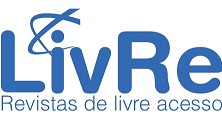THE ORGANIC GRAPE IN ITALIAN COLONIZATION REGION FROM NORTHEAST OF RIO GRANDE DO SUL
The experience of the agriculturists of Ecovêneto from Cotiporã (RS)
DOI:
https://doi.org/10.20873/rtg.v9n18p22-39Keywords:
'Organic grape', 'Viticulture', 'Family farming', 'ICR'Abstract
The Italian Colonization Region (ICR) from Northeast of Rio Grande do Sul has cultural characteristics present in its territory that are strongly linked to the occupation process and initial settlement of the southern space from 1875 by Italian settlers. The work dedicated to grape and wine production falls within this context and over the years this craft has become the main agricultural activity of ICR. Since the first vines that were planted in the region, they maintain their wine tradition centered on the family nucleus in which different generations of the same family share the same work environment, the family farm with the cultivation of vineyards. This is the case of the municipality of Cotiporã, which has a significant number of family farmers, mostly descendants of the first Italian settlers who settled where it is now located the municipality. They continued to dedicate themselves to grape and wine culture, making the municipality one of the largest grape producers in the state. Most of the grapes grown at the ICR are made along the lines of conventional agriculture. However, in Cotiporã, a group of farmers decided to convert the vineyards from the conventional to the organic system. Thus, this article seeks to understand the reasons that have driven the agricultural paradigm shift in the municipality. The methodological procedures that guided the research were: bibliographic review, semi-structured interviews, fieldwork and analysis of the data and collected documents.
References
BATTISTI, Elisa et al. Palatalização das oclusivas alveolares e a rede social dos informantes. Revista Virtual de Estudos da Linguagem - ReVEL. v. 5, n. 9, p. 1-29, 2007.
BRASIL. Companhia Nacional de Abastecimento – CONAB. Preços Mínimos, 2017. Disponível em: <https://www.conab.gov.br/precos-minimos>. Acesso em: 21 de abril de 2020.
BRASIL. Instituto Brasileiro de Geografia e Estatística – IBGE. Cotiporã (RS) – Mapa Municipal Estatístico, 2018. Disponível em: <http://geoftp.ibge.gov.br/cartas_e_mapas/mapas_para_fins_de_levantamentos_estatisticos/censo_demografico_2010/mapas_municipais_estatisticos/rs/cotipora_v2.pdf>. Acesso em: 29 de janeiro de 2020.
BRASIL. Instituto Brasileiro de Geografia e Estatística – IBGE. Cotiporã - Rio Grande do Sul (RS) – Histórico do município, 2010. Disponível em: <https://biblioteca.ibge.gov.br/visualizacao/dtbs/riograndedosul/cotipora.pdf>. Acesso em: 15 de dezembro de 2019.
BRASIL. Instituto Brasileiro de Geografia e Estatística – IBGE. História de Cotiporã, 2017. Disponível em: <https://cidades.ibge.gov.br/brasil/rs/cotipora/historico>. Acesso em: 17 de abril de 2020.
BRASIL. Lei N° 11.476, de 29 de maio de 2007. Dispõe sobre a regulamentação das profissões de Enólogo e Técnico em Enologia. Diário Oficial da União, Brasília, 29 mai. 2007. Disponível em: <http://www.planalto.gov.br/ccivil_03/_Ato2007-2010/2007/Lei/L11476.htm>. Acesso em: 22 de abril de 2020.
FLORES, Carlos Alberto et al. Vinhos de Pinto Bandeira: características de identidade regional para uma Indicação Geográfica. Circular Técnica, n. 55. Bento Gonçalves: EMBRAPA Uva e Vinho, 2005. p.1-12.
FROSI, Vitalina Maria.; MIORANZA, Ciro. Imigração Italiana no Nordeste do Rio Grande do Sul: processos de formação e evolução de uma comunidade ítalo-brasileira. Caxias do Sul: Editora da UCS, 2009.
GUERRA, Celito Crivellaro. Uvas Americanas e Híbridas para Processamento em Clima Temperado, 2003. Disponível em: <https://sistemasdeproducao.cnptia.embrapa.br/FontesHTML/Uva/UvaAmericanaHibridaClimaTemperado/colheita.htm>. Acesso em: 21 de abril de 2020.
INSTITUTO BRASILEIRO DO VINHO – IBRAVIN. Medalhas no exterior crescem 80%, 2018a. Disponível em: <https://www.ibravin.org.br/Noticia/medalhas-no-exterior-crescem-80-/402>. Acesso em: 13 de abril de 2020.
INSTITUTO BRASILEIRO DO VINHO – IBRAVIN. Nota Sobre Acordo Livre Comércio e medidas compensatórias: Acordo de Livre Comércio Mercosul - União Europeia, 2019. Disponível em: <https://www.ibravin.org.br/Noticia/nota-sobre-acordo-livre-comercio-e-medidas-compensatorias/422>. Acesso em: 12 de abril de 2020.
INSTITUTO BRASILEIRO DO VINHO – IBRAVIN. Qualidade marca a safra de uva 2018 no Rio Grande do Sul, 2018b. Disponível em: <https://www.ibravin.org.br/Noticia/qualidade-marca-a-safra-de-uva-2018-no-rio-grande-do-sul/367>. Acesso em: 12 de abril de 2020.
INSTITUTO BRASILEIRO DO VINHO – IBRAVIN. Safra de 2017 é recorde no Rio Grande do Sul, 2017. Disponível em: <https://www.ibravin.org.br/Noticia/safra-de-uva-2017-e-recorde-no-rio-grande-do-sul/281>. Acesso em: 17 de abril de 2020.
INTERNATIONAL ORGANISATION OF VINE AND WINE – OIV. Statistics, 2016. Disponível em: <http://www.oiv.int/en/statistiques/recherche>. Acesso em: 23 de abril de 2020.
MANFIO, Vanessa. A vitivinicultura no espaço geográfico do Rio Grande do Sul, Brasil: uma abordagem sobre a Campanha Gaúcha. Caminhos de Geografia. Uberlândia, v. 20, n. 70, p. 433-477, 2019.
MANFIO, Vanessa.; PIEROZAN, Vinício Luís.; MEDEIROS.; Rosa Maria Vieira. A produção de uva orgânica no estado do Rio Grande do Sul: as experiências dos agricultores familiares de Cotiporã e Dom Pedrito. Para Onde!?. Porto Alegre, v. 11, n. 1, p. 36-44, 2019.
MANFIO, Vanessa.; PIEROZAN, Vinício Luís. As novas alternativas rurais na Quarta Colônia, RS, Brasil: um estudo sobre a agricultura de base agroecológica e a agricultura orgânica. InterEspaço: Revista de Geografia e Interdisciplinaridade. Grajaú, v. 3, n. 9, p. 175-194, 2017.
MANFIO, Vanessa.; PIEROZAN, Vinício Luís. Território, cultura e identidade dos colonizadores italianos no Rio Grande do Sul: uma análise sobre a Serra Gaúcha e a Quarta Colônia. GEOUSP Espaço e Tempo (Online). São Paulo, v. 23, n. 1, p. 144-162, 2019.
MELLO, Loiva Maria Ribeiro de. Desempenho da vitivinicultura brasileira em 2015, 2016. Disponível em: <https://www.embrapa.br/busca-de-noticias/-/noticia/9952204/ar-da-vitivinicultura-brasileira-em-2015>. Acesso em: 13 de abril de 2020.
MELLO, Loiva Maria Ribeiro de.; MACHADO, Carlos Alberto Ely. Área cultivada com videiras no Rio Grande do Sul: 2008-2012. Documentos, n. 87. Bento Gonçalves: EMBRAPA Uva e Vinho, 2013. p.1-49.
MELLO, Loiva Maria Ribeiro de.; MACHADO, Carlos Alberto Ely. Dados da Vitivinicultura: produção de vinhos, sucos e derivados do Rio Grande do Sul em 2018, 2018. Disponível em: <http://vitibrasil.cnpuv.embrapa.br/index.php?opcao=opt_02&in>. Acesso em: 12 de abril de 2020.
MELLO, Loiva Maria Ribeiro de et al. Dados cadastrais da viticultura do Rio Grande do Sul: 2013 a 2015. In: MELLO, Loiva M. R. de.; MACHADO, Carlos A. E. (Orgs.). Cadastro Vitícola do Rio Grande do Sul: 2013 a 2015. Brasília: EMBRAPA Uva e Vinho, 2017. p.09-30.
NACHTIGAL, Jair Costa et al. Definição de sistema de produção de videiras de base ecológica em assentamentos de reforma agrária no Rio Grande do Sul. Cadernos de Agroecologia. Guarapari, v. 2, n. 2, p. 178-181, 2007.
PIEROZAN, Vinício Luís. A produção de uva orgânica na Serra Gaúcha: o caso dos agricultores orgânicos de Cotiporã/RS. Geographia Meridionalis. Pelotas, v. 4, n. 2, p. 168-184, 2018.
PIEROZAN, Vinício Luís. A produção de uva orgânica no estado do Rio Grande do Sul: as experiências dos viticultores de Cotiporã, RS. Revista Geonorte. Manaus, v. 10, n. 36, p. 17- 35, 2019.
RIO GRANDE DO SUL. Secretaria da Agricultura, Pecuária e Desenvolvimento Rural – SEAPDR. Vitivinicultura gaúcha representa 90% da produção nacional de vinhos, 2013. Disponível em: <https://www.agricultura.rs.gov.br/vitivinicultura-gaucha-representa-90-da-producao-nacional-de-vinhos-5891d2ea62361>. Acesso em: 13 de abril de 2020.
RIZZON, Luiz Antenor.; ZANUS, Mauro Celso.; MANFREDINI, Sadi. Como elaborar vinho de qualidade na pequena propriedade. Documentos, n. 12. 1. ed. Bento Gonçalves: EMBRAPA Uva e Vinho, 1994. p.1-52.
SABBATINI, Mario.; FRANZINA, Emilio. I Veneti in Brasile nel Centenario dell’emigrazione (1876-1976). Vicenza: Accademia Olimpica, 1977.
TONIETTO, Jorge et al. O clima vitícola das regiões produtoras de uvas para vinhos finos do Brasil. In: TONIETTO, Jorge.; RUIZ, Vicente S.; GÓMEZ-MIGUEL, Vicente D. (Orgs.). Clima, zonificación, y tipicidad del vino en regiones vitivinícolas iberoamericanas. Madrid: CYTED, 2012. p.111-143.
Published
How to Cite
Issue
Section
License
Revista Tocantinense de Geografia does not remunerate any author for the publication of their texts. The contents of the texts published in this journal are the responsibility of the authors.








.png)












